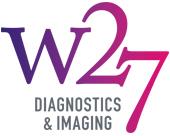What is it
Ultrasound (USS) uses high frequency sound waves that are transmitted using a transducer (hand-help probe) applied to the body, to produce pictures of the insides of our organs, bones and joints, muscles, tendons and ligaments. Unlike X-rays, USS does not involve the use of radiation and is usually a safe, painless and quick imaging test. USS is a live, real-time scan where both static and dynamic images or videos can be produced.
What it is used for
Ultrasound scans are used in the musculoskeletal system to help diagnose:
- tendon inflamation or tendon tears e.g. Rotator cuff tendons in the shoulder or Achilles’ tendon in the ankle
- ligament sprains and tears
- muscle tears, masses or fluid collections e.g. ganglionic cysts
- inflammation or collection of fluid in joints and soft tissues e.g. bursitis
- hernias
- benign and malignant tumours
- nerve entrapment e.g. carpal tunnel syndrome in the wrist
They may also be used to guide radiologists during certain diagnostic and therapeutic procedures e.g aspirations or injections.
What to expect
You will normally lie on a bed or sat up in a chair whilst the radiologist scans you. The USS probe is placed over the skin and with the use of a lubricating gel, it is moved around the skin to get live, dynamic (moving) images of structures commonly seen like bones and joints, tendons and ligaments etc.
Most diagnostic musculoskeletal USS scans can take between 10-20 minutes, whilst USS-Guided injections or interventions can take a little longer, and it all depends on what and how many different regions require scanning.
Before and after
Your appointment letter will explain how to prepare for your scan. Usually there is no significant preparation required for USS in the musculoskeletal setting.
After most other USS scans you should be able to return to your normal activities immediately.
If you have had an injection containing local anaesthetic under USS-guidance, then it is advisable not to drive or operate any heavy machinery on the day of the test, to allow you to recover safely.






